(sold for $14.0)
1280, Duchy of Athens, Guy II de la Roche. Billon Denier Tournois Crusader Coin.
Mint Period: 1280-1308 Denomination: Billon Denier Reference: Metcalf 1051-66. Condition: A nice XF for type! Material: Billon (low grade silver) Diameter: 19mm Weight: 0.95gm
Obverse: Stylized castle, topped by cross. Legend around. Legend: THEBAHI CIVIS Reverse: Short-cross within inner circle. Legend: .GVI DVX ATENES
The Duchy of Athens (Greek: Δουκᾶτον Ἀθηνῶν, Catalan: Ducat d'Atenes) was one of the Crusader states set up in Greece after the conquest of the Byzantine Empire during the Fourth Crusade, encompassing the regions of Attica and Boeotia, and surviving until its conquest by the Ottoman Empire in the 15th century.
The first duke of Athens (as well as of Thebes, at first) was Otto de la Roche, a minor Burgundian knight of the Fourth Crusade. Although he was known as the "Duke of Athens" from the foundation of the duchy in 1205, the title did not become official until 1260. Instead, Otto proclaimed himself "Lord of Athens" (in Latin Dominus Athenarum, in French Sire d'Athenes). The local Greeks called the dukes "Megas Kyris" (Greek: Μέγας Κύρης, "Great Lord"), from which the shortened form "Megaskyr", often used even by the Franks to refer to the Duke of Athens, is derived.
Athens was originally a vassal state of the Kingdom of Thessalonica, but after Thessalonica was captured in 1224 by Theodore, the Despot of Epirus, the Principality of Achaea claimed suzerainty over Athens, a claim disputed by the de la Roche in the War of the Euboeote Succession. Like the rest of Latin Greece, however, the Duchy recognized the suzerainty of Charles I of Sicily after the Treaties of Viterbo in 1267.
The Duchy occupied the Attic peninsula as well as Boeotia and extended partially into Thessaly, sharing an undefined border with Thessalonica and then Epirus. It did not hold the islands of the Aegean Sea, which were Venetian territories, but exercised influence over the Latin Triarchy of Negroponte. The buildings of the Acropolis in Athens served as the palace for the dukes.
The Duchy was held by the family of la Roche until 1308, when it passed to Walter V of Brienne. Walter hired the Catalan Company, a group of mercenaries founded by Roger de Flor, to fight against the Byzantine successor state of Epirus, but when he tried to dismiss and cheat them of their pay in 1311, they slew him and the bulk of the Frankish nobility at the Battle of Halmyros and took over the Duchy. Walter's son Walter VI of Brienne retained only the lordship of Argos and Nauplia, where his claims to the Duchy were still recognized.
In 1312, the Catalans recognized the suzerainty of King Frederick III of Sicily, who appointed his son Manfred as Duke. The ducal title remained in the hands of the Crown of Aragon until 1388, but actual authority was exercised by a series of vicars-general. In 1318/19 the Catalans conquered Siderokastron and the south of Thessaly as well, and created the Duchy of Neopatras, united to Athens. Part of Thessaly was conquered from the Catalans by the Serbs in the 1340s.
Under Aragonese rule, the feudal system continued to exist, not anymore under the Assizes of Romania, but under the Customs of Barcelona, and the official common language was now Catalan instead of French. Each city and district—on the example of Sicily—had its own local governor (veguer, castlà, capità), whose term of office was fixed at three years and who was nominated by the Duke, the vicar-general or the local representatives. The principal towns and villages were represented by the síndic, which had their own councils and officers. Judges and notaries were elected for life or even as inherited offices.
In 1379 the Navarrese Company, in the service of the Latin emperor James of Baux, conquered Thebes and part of Neopatria. Meanwhile, the Aragonese kept another part of Neopatras and Attica.
After 1381 the Duchy was ruled by the Kings of Sicily until 1388 when the Acciaioli family of Florence captured Athens. Neopatras was occupied in 1390.
From 1395 to 1402 the Venetians briefly controlled the Duchy. In 1444 Athens became a tributary of Constantine Palaeologus, the despot of Morea and heir to the Byzantine throne. In 1456, after the Fall of Constantinople (1453) to the Ottoman Empire, Turahanoğlu Ömer Bey conquered the remnants of the Duchy. Despite the Ottoman conquest, the title of "Duke of Athens and Neopatras" continued in use by the kings of Aragon, and through them by the Kings of Spain, up to the present day.
Athens was the seat of a metropolitan archdiocese within the Patriarchate of Constantinople when it was conquered by the Franks. The see, however, was not of importance, being the twenty-eighth in precedence in the Byzantine Empire. Nonetheless, it had produced the prominent clergyman Michael Choniates. It was a metropolitan see (province or eparchy) with eleven suffragans at the time of conquest: Euripus, Daulia, Coronea, Andros, Oreos, Scyrus, Karystos, Porthmus, Aulon, Syra and Seriphus, and Ceos and Thermiae (or Cythnus). The structure of the Greek church was not significantly changed by the Latins, and Pope Innocent III confirmed the first Latin Archbishop of Athens, Berard, in all his Greek predecessors' rights and jurisdictions. The customs of the church of Paris were imported to Athens, but few western European clergymen wished to be removed to such a distant see as Athens. Antonio Ballester, however, an educated Catalan, had a successful career in Greece as archbishop.
The Parthenon, which had been the Orthodox church of the Theotokos Atheniotissa, became the Catholic Church of Saint Mary of Athens. The Greek Orthodox church survived as an underground institution without official sanction by the governing Latin authorities. The Greek clergy had not typically been literate in the twelfth century and their education certainly worsened under Latin domination, when their church was illegal.
The archdiocese of Thebes also lay within the Athenian duchy. Unlike Athens, it had no suffragans. However, the Latin archbishopric produced several significant figures as archbishops, such as Simon Atumano. It had a greater political role than Athens because it was situated in the later capital of the duchy at Thebes. Under the Catalans, the Athenian diocese had expanded its jurisdiction to thirteen suffragans, but only the diocese of Megara, Daulia, Salona, and Boudonitza lay with the duchy itself. The archiepiscopal offices of Athens and Thebes were held by Frenchmen and Italians until the late fourteenth century, when Catalan or Aragonese people began to fill them.
Buy with confidence!
Guy II de la Roche (1280 – 5 October 1308) was the Duke of Athens from 1287, the last duke of his family. He succeeded as a minor on the death of his father, William I, at a time when the duchy of Athens had exceeded the Principality of Achaea in wealth, power, and importance.
Guy was originally under the tutorship and regency of his mother, Helena Angelina Komnene, who was forced to make submission to Isabella of Villehardouin in December 1289. In 1291, she married her second husband, Hugh of Brienne, and he became bailiff of the duchy. Guy reached his majority in 1296 and did homage to Isabella and her husband, Florent of Hainaut. In 1299, Guy was engaged to Matilda, daughter of Isabella and Florent. Charles objected, as his permission had not been sought, but Pope Boniface VIII intervened on the young couple's behalf.
When Guy did homage to Isabella's second husband, Philip of Savoy, in 1301, he took his troops with him and entered Thessaly to defend his cousin John II Doukas against the invasion of the despot of Epirus, Thomas I Komnenos Doukas, and his mother, Anna Palaiologina Kantakouzene. Joined by Nicholas III of St Omer, lord of Thebes, he repulsed the Epirotes and later invaded Greek territory as far as Thessalonica, where they were convinced to turn back by the empress Eirene of Montferrat.
In 1307, Guy was made bailli of Achaea by its new prince, Philip I of Taranto.[1] He governed well, but for barely a year. He died, 5 October 1308, at the age of twenty-eight, but was respected and renowned for his chivalry and manners, typical of the Frankish courts kept in Greece. He was buried in Daphni Monastery[1] alongside his ancestors. He left no heirs and the De la Roche line of dukes came to an end; Athens was disputed among rival claimants until the parliament of the duchy elected Walter V of Brienne.

|
Posted by:
anonymous 2017-07-10 |
10 Krone Kingdom of Hungary (1000-1918) Gold Franz Joseph I ...
group has 30 coins / 26 prices
⇑






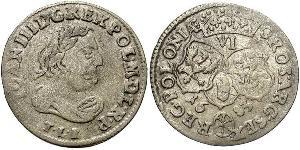
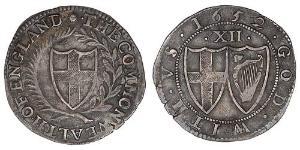
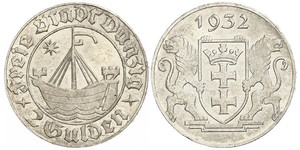

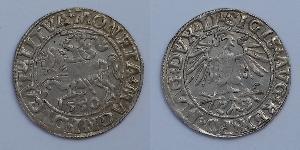

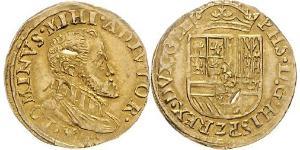

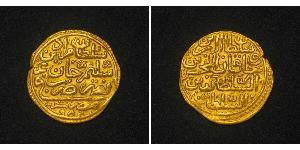
-300-150-Okt_AAEBZM4AAAEjdmnAPfNS.jpg)







